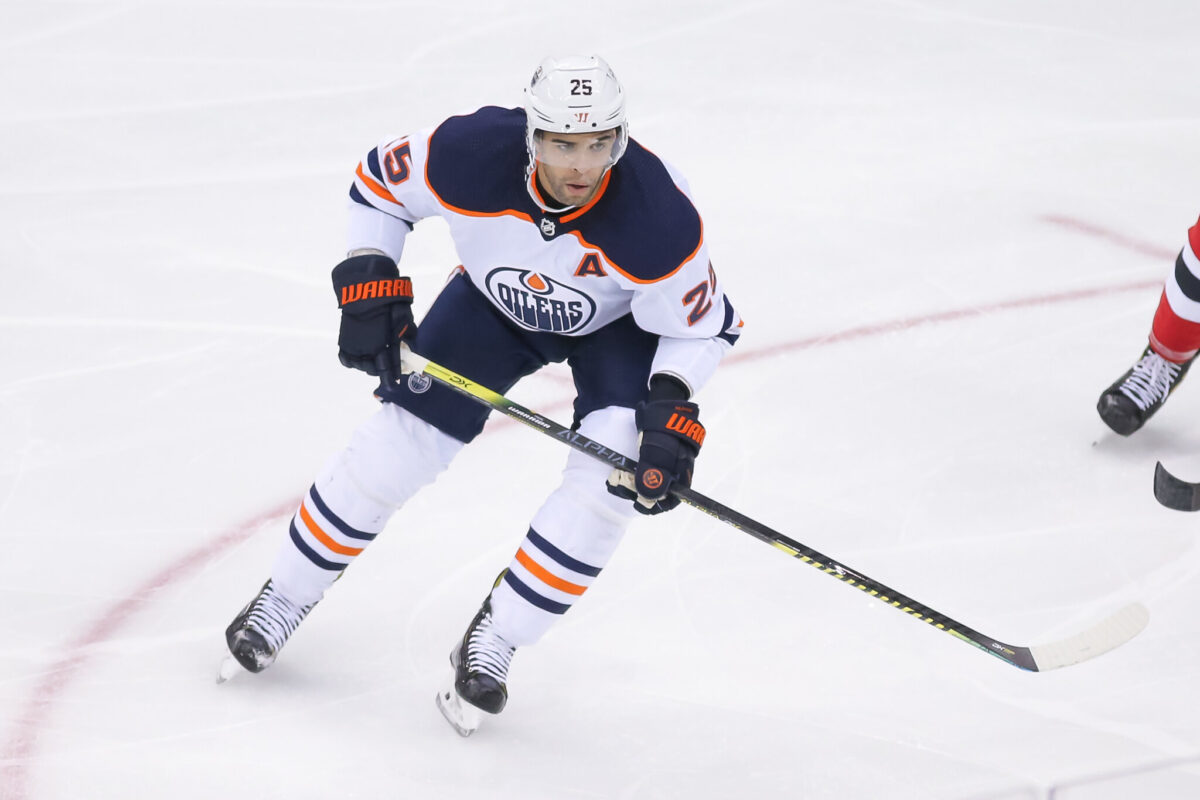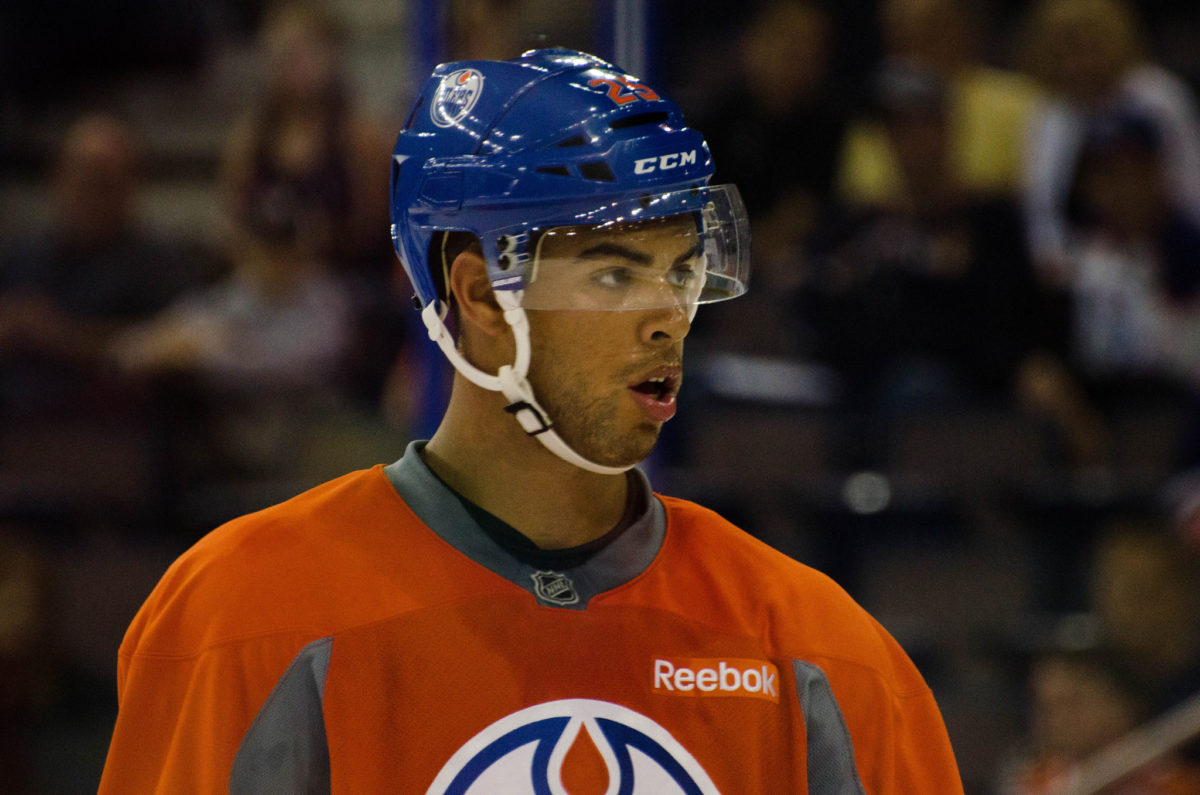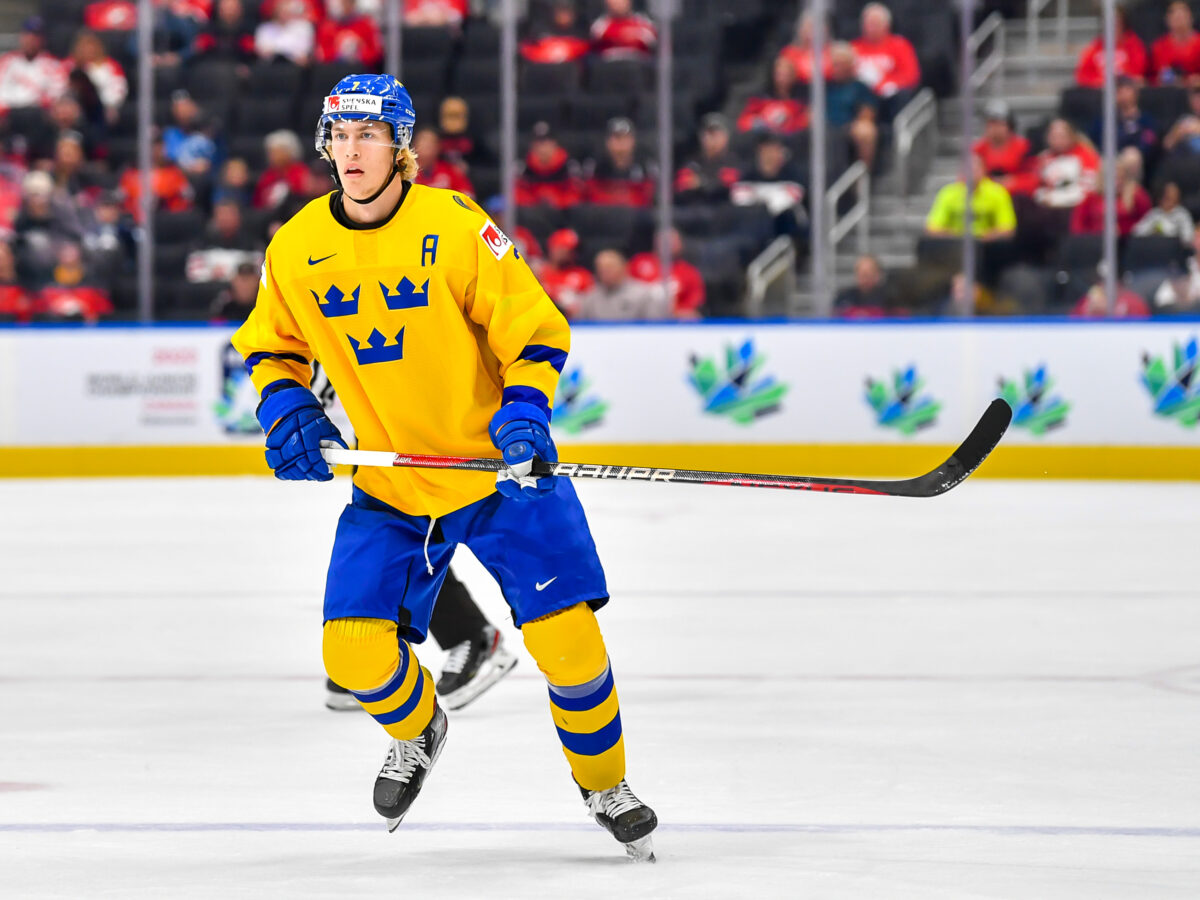What do the Detroit Red Wings and the Edmonton Oilers have in common? They both were rebuilding franchises that drafted a 6-foot-4 defenseman who can carry pucks out of the zone and punish guys who come into their own end. Who are these defensemen drafted eight years apart? Darnell Nurse and Simon Edvinsson. Let’s look at their games from a similar point in their career — their draft-plus-two year.
Elite Puck Carriers
Nurse and Edvinsson are both elite puck carriers. They are able to zig and zag through traffic with the puck strikingly better than they are able to pass it up the ice. It’s not that they are bad passers, but their carrying ability is just that much better.
When scouts talk about a player being “mobile,” this is most often what they mean. They are generally great athletes with great skating ability, and they use that ability to advance the puck up the ice. Take a look at this video, in particular at the 0:58 time stamp.
You can see Nurse rush up the right side of the ice (No. 25 in red) with speed, cut around the outside of his opponent and throw the puck on net for a goal. Those shots won’t typically go in on NHL competition, but his speed with that frame is multiple desirables in one package.
Nurse & Edvinsson Had Similar Draft Positions
Nurse was drafted seventh overall in the 2013 Entry Draft by the Oilers, while Edvinsson fell to the Red Wings at sixth overall in the 2021 draft eight years later. From 2010 to 2018, there have been 28 defencemen taken in the top 10 selections of the NHL Entry Draft.

Of those 28, there are 21 who have played north of 200 games in the NHL. A few notables who haven’t hit that mark yet are Evan Bouchard, Adam Boqvist and Cale Makar; I didn’t include anyone from 2019-2022 because no one has hit that benchmark from those draft classes yet. The other four defencemen are Olli Juolevi, Slater Koekkoek, Dylan McIlrath and Griffin Reinhart.
If we look at just “big” players (those who are 6-foot-3 or taller), the crop thins to 13. Three of the 13 average 25 or fewer points a year and are either considered depth players or defensive specialists; Haydn Fleury, Erik Gudbranson and Adam Larsson. Here are the remaining 10: Dougie Hamilton, Hampus Lindholm, Jacob Trouba, Seth Jones, Rasmus Ristolainen, Aaron Ekblad, Noah Hanifin, Mikhail Sergachev, Rasmus Dahlin, and Darnell Nurse himself.

That crop of players range from good to great skaters, so they all fit the mold of “big and mobile” defencemen who can produce offence from the back end. Of the original 28 players observed, 35 percent of them fit the description. Even when factoring the three who haven’t produced more than 25 points, that hit rate rises to 46 percent. Those are pretty good odds for teams to take in drafting players who are often the building blocks of a defence core for years to come.
By this logic, Edvinsson has a 35 percent chance of becoming a productive, big, mobile NHL defenceman. If he doesn’t hit offencively, he still has nearly a 50 percent chance of sticking in the NHL in a defence-first role. Now onto reasons Edvinsson could turn out better than Nurse.
Draft Year Quality of Competition
Edvinsson played his last full year of hockey in the Swedish Hockey League (SHL). Everyone who follows the sport knows that the SHL has a fantastic track record of developing productive players once they cross the pond — some notables being Victor Hedman and Rasmus Dahlin.
Production-wise, Edvinsson produced 19 points in 44 games for Frolunda in the SHL, while Nurse garnered 50 points in 64 games for the Ontario Hockey League’s Soo Greyhounds. At first blush, that might seem to give the edge to Nurse, but NHLe levels the playing field.

NHLe is a calculation used to see how transferable a player’s point production is to the NHL. There are many different models used for this calculation, but they generally deliver similar results.
According to the Dobber Hockey’s Frozen Tools NHLe calculator, both Edvinsson and Nurse shared an NHLe of 21. When two players have exactly the same NHLe, I give the tiebreaker to the one in the more difficult league, so Edvinsson takes the edge here.
Offensive Creativity
The number one reason to be excited at the potential arrival of Edvinsson is his offensive creativity. Although he and Nurse are both excellent mobile back-end threats, they have different strengths that they utilize.
Related: Red Wings’ Edvinsson Is Better Off With the Griffins in the AHL
Nurse depends on his natural athleticism and skating to duck and weave his way through the opposition to gain zone entries. He drives to the net with force and often will create rushes or barrels down the ice to join them.
Edvinsson takes the puck along the left wall at 1:20 of the above video, attacking the left side of the net. At the last moment, he cuts toward the slot, half spins, and passes to a teammate beside the net who slams in a goal. You can see his hockey IQ shine in a moment like that when he could have just attacked the net and instead decided to draw defenders to him and pass to someone with a higher chance of scoring. Some time in the AHL could help him develop this part of his game further and give him the confidence to execute better in the NHL.
Edvinsson is primed to be the new and improved version of Nurse. With a 35 percent chance of being a productive, mobile, big NHL defenceman, he’s got a good chance, which is even better considering his equal NHL equivalency at the same point in his career but in a tougher league. While Nurse is a more direct-to-the-net player, Edvinsson has demonstrated a dimension of creativity that points to him having a higher point potential than the NHL veteran. All aboard the Swedish hype train.